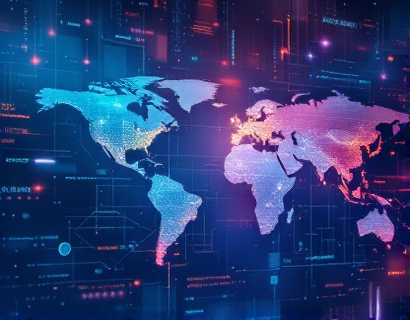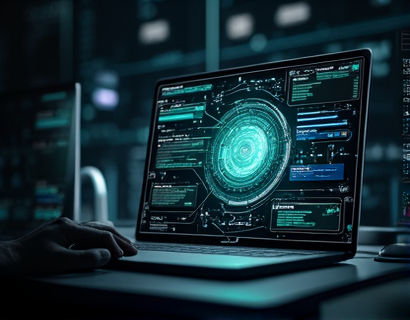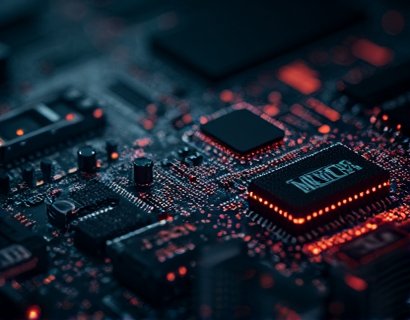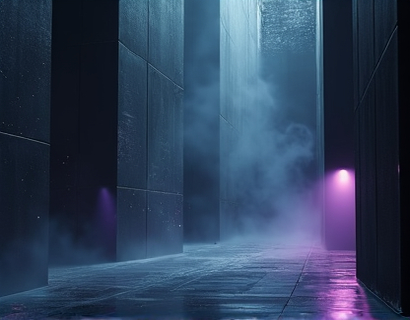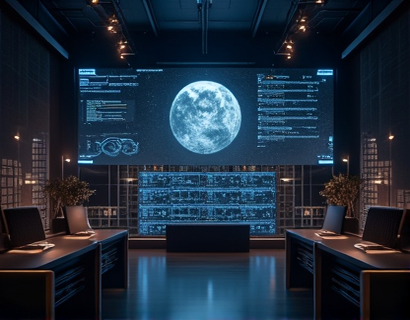Revolutionizing Memorial Creation: The Synergy of AI and Blockchain for Lasting Tributes
The concept of memorializing loved ones has evolved significantly with the advent of technology. Traditionally, memorials were physical structures or simple markers, but the digital age has opened new avenues for creating meaningful and personalized tributes. This article explores how the combination of Artificial Intelligence (AI) and Blockchain technology is transforming the way we create and preserve online memorials, offering a secure, personalized, and lasting legacy for the bereaved.
Understanding the Need for Digital Memorials
The loss of a loved one leaves a profound void in the lives of those left behind. Digital memorials serve as a bridge, connecting the living with the memories of the departed. These online spaces allow families and friends to share stories, photos, and messages, creating a community of remembrance. However, the digital nature of these memorials introduces challenges related to security, privacy, and longevity. This is where the integration of AI and Blockchain technology becomes crucial.
AI in Memorial Creation: Personalization at Its Best
AI technology brings a level of personalization to memorial creation that was previously unattainable. By analyzing user inputs, AI algorithms can curate content that reflects the unique personality and life story of the deceased. This includes selecting appropriate music, images, and text that resonate with the individual's interests and achievements. AI can also assist in organizing memories, creating timelines, and even generating personalized messages or poems, ensuring that the memorial is a true reflection of the person's life.
Moreover, AI can enhance the user experience by providing intuitive interfaces and personalized recommendations. For instance, AI-driven chatbots can guide users through the memorial creation process, answering questions and offering suggestions based on the user's preferences. This not only simplifies the process but also ensures that the final product is deeply personal and meaningful.
Blockchain: Ensuring Security and Longevity
Blockchain technology, known for its role in cryptocurrencies, offers a robust solution for securing digital memorials. The decentralized and immutable nature of Blockchain ensures that once a memorial is created, it cannot be altered or deleted. This provides a sense of security and permanence, which is vital for the bereaved who wish to preserve the memory of their loved ones indefinitely.
Each memorial created on a Blockchain-based platform is stored in a distributed ledger, making it resistant to hacking and data breaches. Users can have confidence that their memories are safe and will remain accessible for generations to come. Additionally, Blockchain can facilitate the management of digital assets and inheritance, ensuring that the memorial and associated content are transferred to designated heirs in a secure and transparent manner.
Combining AI and Blockchain: A Synergistic Approach
The true power of integrating AI and Blockchain in memorial creation lies in their complementary strengths. AI handles the creative and personalized aspects, while Blockchain ensures the security and longevity of the memorial. Together, they create a platform that not only honors the memory of the deceased but also provides peace of mind to the living.
For example, a user can input details about the deceased, such as favorite quotes, hobbies, and significant life events. AI algorithms process this information to generate a tailored memorial that includes a personalized biography, a photo gallery, and a section for user-generated content. Meanwhile, the Blockchain component secures this data, ensuring it remains intact and accessible only to authorized individuals.
User Experience: A Seamless Journey
The platform designed to merge AI and Blockchain for memorial creation focuses on providing an intuitive and emotionally supportive experience. Upon logging in, users are greeted with a simple interface that guides them through the memorial creation process step by step. The AI-driven tools assist users at every stage, from initial setup to final customization.
Users can upload photos and videos, write messages, and select music that reflects the personality of the deceased. The AI suggests enhancements and arrangements, ensuring that the memorial is cohesive and meaningful. The platform also allows for the creation of virtual spaces, such as virtual candles, flowers, and other symbolic gestures, adding a layer of interactivity and personal touch.
Privacy and Control: Empowering the Bereaved
Privacy is a paramount concern for those creating memorials. The AI and Blockchain-based platform addresses this by giving users full control over their memorials. Users can decide who can access the memorial, whether it be a private space for immediate family or a public tribute open to friends and a broader community. Access permissions can be set and modified as needed, ensuring that the bereaved have the power to manage their memorials according to their wishes.
Furthermore, the Blockchain aspect ensures that all transactions and data related to the memorial are transparent and verifiable. Users can track who has accessed their memorial and when, providing an additional layer of security and peace of mind.
Preserving Legacy: Long-Term Preservation
One of the most significant advantages of using AI and Blockchain for memorial creation is the long-term preservation of digital legacies. Traditional digital memorials often face the risk of becoming obsolete or inaccessible due to technological changes. However, a Blockchain-based platform ensures that memorials remain compatible with future technologies.
Blockchain's decentralized nature means that memorials are not stored on a single server but across a network of computers. This redundancy protects against data loss and ensures that memorials are preserved even if individual nodes fail. Additionally, the immutable nature of Blockchain means that once a memorial is created, it cannot be altered or deleted, safeguarding it against unauthorized changes.
Community and Support: A Network of Remembrance
The platform fosters a community where users can find support and connection. Bereaved individuals often feel isolated in their grief, but a digital memorial can serve as a hub for shared remembrance. Users can leave messages, share memories, and offer condolences, creating a supportive network for those who are mourning.
AI can enhance this community aspect by facilitating meaningful interactions. For instance, AI can suggest relevant memories or messages based on user interactions, helping to spark conversations and connections. The platform can also host virtual events and ceremonies, allowing people from different parts of the world to come together in remembrance.
Conclusion: The Future of Memorial Creation
The integration of AI and Blockchain technology in memorial creation represents a significant leap forward in how we honor and remember our loved ones. This innovative approach not only provides a secure and personalized way to create tributes but also ensures that these memories are preserved for eternity. As technology continues to evolve, the potential for enhancing the memorial experience is vast, offering new ways to connect, remember, and celebrate the lives of those who have passed on.
In conclusion, the future of memorial creation is bright, thanks to the synergy of AI and Blockchain. These technologies combine to create a platform that is secure, personalized, and enduring, offering a new standard in the way we pay tribute to our loved ones.










